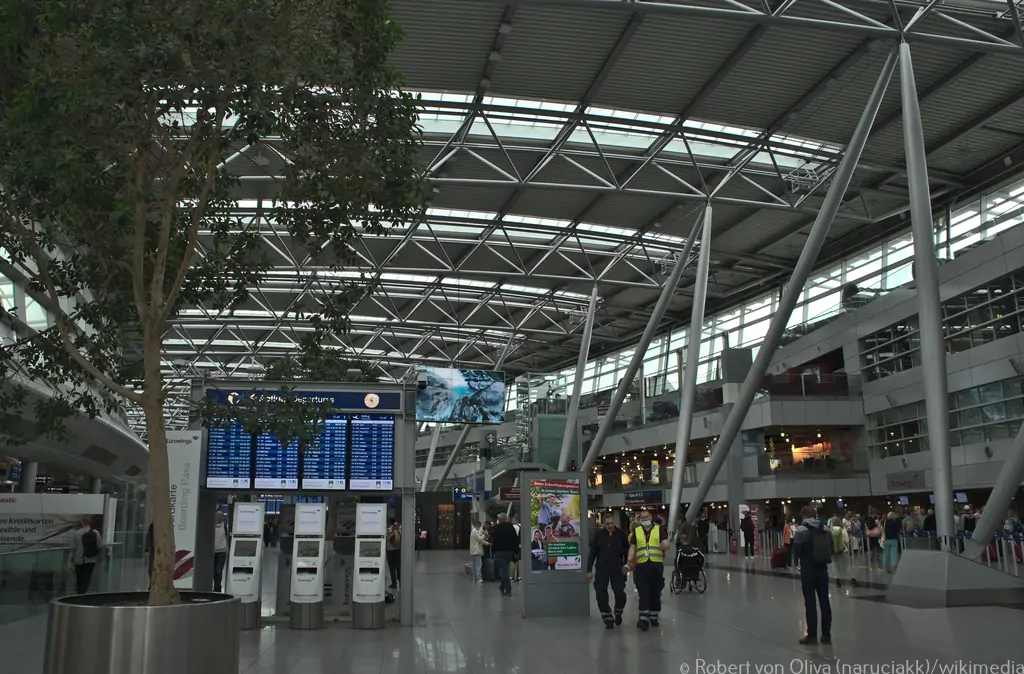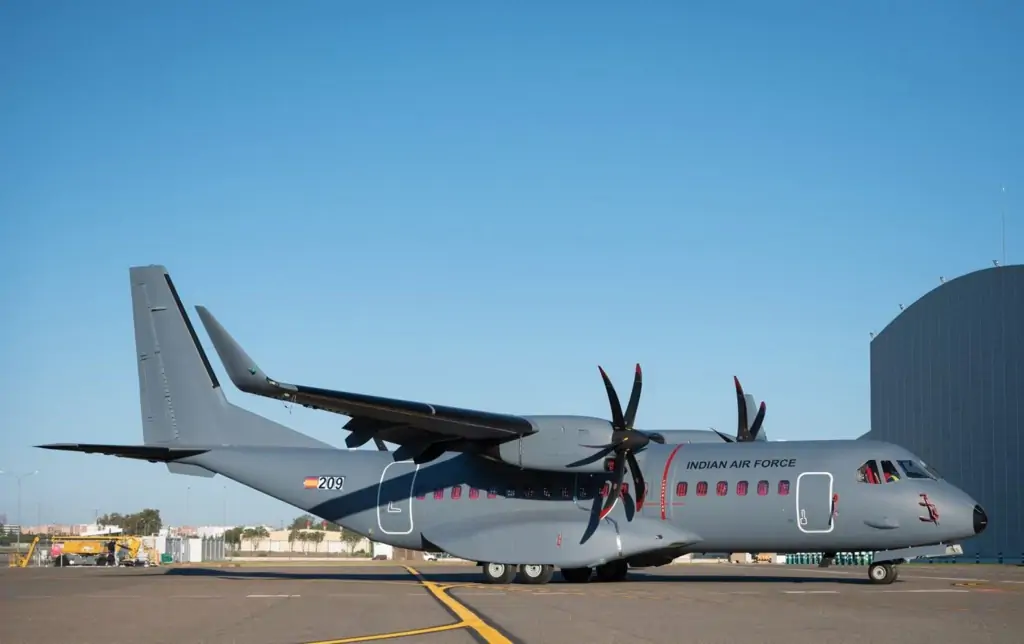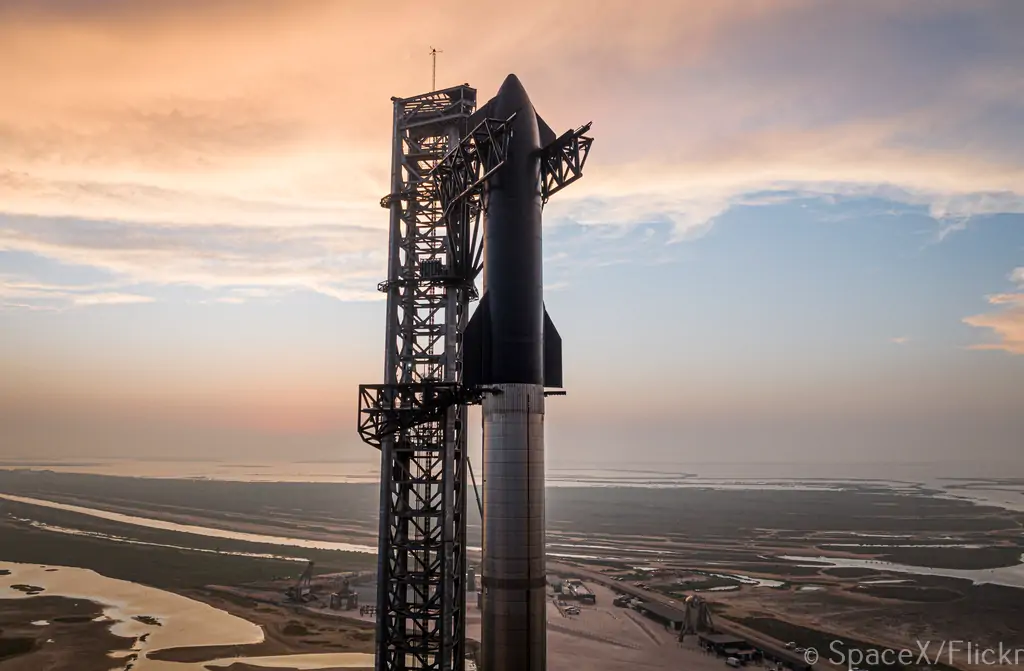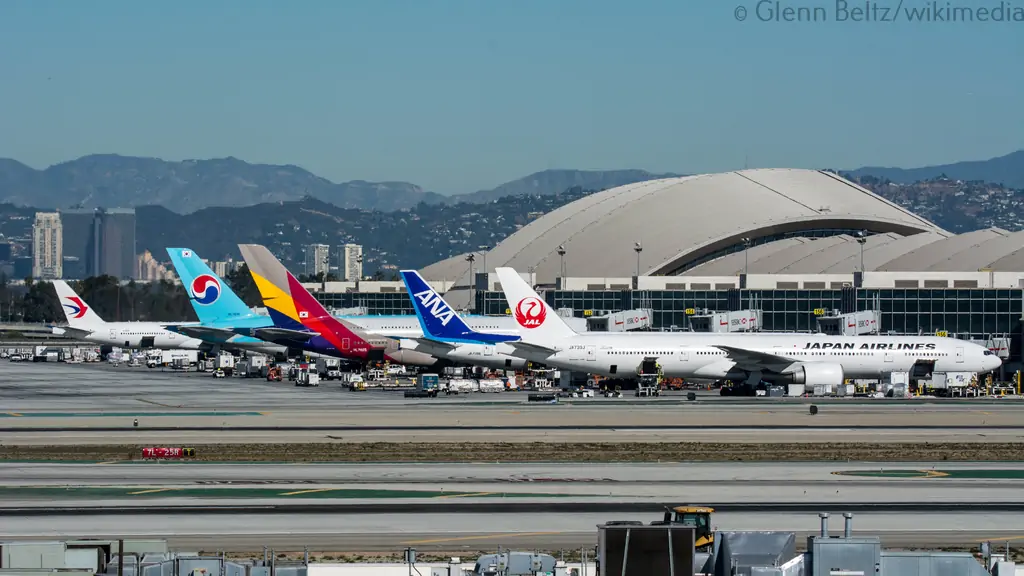SpaceX's widely anticipated Starship rocket took off for its first test flight on April 20, 2023. But, only seconds after launch, the spacecraft detonated in mid-air, startling onlookers, and enthusiasts worldwide. We will look at what happened during the test flight, the impact of the explosion, and what this implies for SpaceX's future ambitions.
What exactly is the Starship Rocket?
A summary of the Starship project: SpaceX's Starship rocket is a cutting-edge spaceship that aims to revolutionize space travel. The Starship is the company's most ambitious project to date, with the goal of transporting personnel and goods to the moon, Mars, and beyond.
Maiden Flight
On Thursday, SpaceX's next-generation spaceship, Starship, crashed minutes after liftoff in an uncrewed test flight from South Texas, cutting short Elon Musk's construction of a rocket vessel that would someday transport humans to the moon and Mars.
Nevertheless, SpaceX later stated that the spacecraft "experienced several engines out" during its ascent, then "lost altitude and began to tumble" before the "flight termination mechanism on both the rocket and the ship was commanded."
The Fiery Disassembly
The two-stage rocket ship, which stands 394 feet (120 metres) taller than the Statue of Liberty, took off from the company's Starbase spaceport on the southern point of Texas along the Gulf Coast east of Brownsville. SpaceX wanted to make a 90-minute first voyage into space, but only as far as Earth’s orbit.
What exactly does this signify for SpaceX?
Short-term consequences: The Starship rocket explosion is a major setback for SpaceX, forcing delays and perhaps costing the business billions of dollars. The corporation must analyse what went wrong during the test flight and take preventative measures to avoid such mishaps in the future.
Long-term consequences: Despite the setback, SpaceX remains dedicated to its ambition of transforming space travel. The business has already begun construction on a new version of the Starship rocket, taking lessons from the failed test flight into account. SpaceX's ultimate objective is to make space travel accessible to everyone, and the business will continue to push the envelope in the coming years.
Thoughts
Musk, shown wearing a headphone at the Starbase mission control centre in Boca Chica, Texas, later tweeted that the second Starship test launch will be in a few months.
Previously, SpaceX has flown prototypes of the top half of the Starship in five brief flights to a height of 6 miles (9.7 km), attempting to refine its return landing capabilities. Except for one, they all went up in flames.
SpaceX's Prospects
Despite the setback, SpaceX is unlikely to abandon its lofty aspirations. Elon Musk is known for his endurance and ambition, and the firm has a track record of coming back from setbacks. SpaceX has already accomplished a number of firsts in space exploration, including the launch of the first privately financed liquid-propellant rocket into orbit, docking with the International Space Station, and launching the first commercially constructed and flown spaceship to transfer goods to the ISS. SpaceX clearly has the skills and resources to continue pushing the limits of space exploration.
Conclusion
The explosion of SpaceX's Starship rocket on its first test flight serves as a reminder of the dangers and difficulties of space travel. The launch of the Starship rocket was a significant milestone for SpaceX, but the explosion serves as a reminder of the dangers and difficulties that come with space travel. While the reason for the explosion remains unknown, SpaceX will likely learn from this setback and go on with its ambitious plans. SpaceX's growth in space exploration has been nothing short of spectacular, and we can expect more fascinating advances from the firm in the coming years.
With Inputs from Reuters
Read next
The Directorate General of Civil Aviation (DGCA) on Thursday, April 20 signed a memorandum of understanding with the European Union Aviation Safety Agency (EASA) for cooperation in aviation safety. The agreement was signed on the first day of the EU-India Aviation Summit here where the Airport Authority of India also signed a declaration of intent with Eurocontrol, a pan-European, civil-military organisation dedicated to supporting European aviation.
While the MoU between DGCA and EASA will focus on collaboration at the regulatory level and safety level, the declaration of intent between AAI and Eurocontrol will be focused on the area of air traffic control.
Aviation Minister Jyotiraditya Scindia said India and the EU share historical relations and invited industry players from the EU to become a part of the fastest-growing aviation market in the world. "India and the EU have shared strong historical relations which continue to grow today on the back of robust physical, digital and people-to-people connectivity, aided by the aviation industry," he said. Scindia made these comments in his virtual address at the two-day summit. He could not attend the event in person after testing Covid positive.
Adina V'lean, European Union Commissioner for Transport, also addressed the summit through virtual mode. "From commercial opportunities to aviation safety and security, sustainability, air traffic management, or consumer protection, our shared experiences, as well as our shared objectives, make us natural partners. We already have a successful history of partnership and cooperation in many areas. I truly hope aviation will become one of our most successful partnerships," she said.
Focus of the Summit
The summit focuses on EU-India air transport relations and the mutually shared challenges and opportunities of the two regions, such as the post-Covid recovery of air traffic, increasing sustainability, maintaining safety and the development of unmanned aircraft systems. The summit will bring together top-level policymakers, industry executives and stakeholders from both the EU and India. "We have a long-standing history of bilateral relations between India and the EU. I am sure we have a bright future together with even stronger cooperation and collaboration between EU and India," said Andreas Carlson, Minister of Infrastructure and Housing, Sweden.
The EU-India aviation market is also strategically important, with around 23 lakh passengers travelling on direct routes between the EU and India every year. Yet around 60% of all passengers travelling between the EU and India connect via hub airports in other countries, “showing the significant potential for growing the direct market". Currently, India has open skies arrangements with only six of the 27 EU member states.
Sweden’s minister for infrastructure and housing, Andreas Carlson, represented the Swedish Presidency of the Council of the EU. Close to 300 other representatives from the European and Indian aviation sectors, including EASA, SESAR 3 Joint Undertaking and Eurocontrol, Airports Authority of India, Directorate General of Civil Aviation, airlines, airports and other stakeholders are attending the event. Europe has created the world’s largest integrated aviation market – a market that serves 27 States and a population of more than 450 million, that transported over one billion passengers in 2019 – half of those domestically, within the EU, and the other half internationally.
The government recently laid out new MRO guidelines for rationalisation of the charges leviable on MRO Service Providers to promote ease of doing business. Scindia also said, "I would urge industry players from the EU to tap these opportunities and become a part of the fastest-growing aviation market in the world.”
The Civil Aviation Minister has also invited EU players to partner with India in developing adaptive technologies to support the objective of tackling emissions from the aviation industry. The government is also encouraging airports to use 100% green energy by 2024 and achieve net zero by the year 2030. Currently, 25 AAI airports are using 100% green energy and the government is targeting to make another 121 Airports carbon neutral by 2025. The government is also working towards encouraging the use of Sustainable Aviation Fuel.
AAI Chairman Highlights Modern Facilities and Expansion Plans
The EU-India Aviation Summit 2023, which took place in New Delhi, Sh. Sanjeev Kumar, Chairman of the Airports Authority of India (AAI), expresses the growing propensity of Indians to fly due to the country's increasing GDP. He highlighted the untapped travel potential between India and European destinations and emphasized AAI's commitment to meeting the growing passenger demand.
AAI is working towards enabling travellers with better and cheaper air travel options by expanding the capacity of its airports and developing Tier 2 and Tier 3 airports. He also mentioned that AAI has recently built a new terminal building with modern facilities at Chennai airport, showcasing their focus on improving infrastructure. AAI is investing more in airport infrastructure to facilitate the growing demand for domestic and international passenger travel. AAI's efforts to support the expanding aviation sector in India and strengthen air connectivity between India and Europe.
Read next
German Airports Deserted as Transport Strikes Over the Cost-of-Living Crisis
Abhishek Nayar
21 Apr 2023

Germany, one of Europe's most prosperous countries, is undergoing a cost-of-living crisis, which has resulted in widespread transport strikes. Personnel in the aviation, rail, and public transport industries have gone on strike, effectively shutting down the country's transport infrastructure. As a result, German airports are barren, trains and buses are not functioning, and commuters and visitors are stranded.
The Roots of the Cost-of-Living Crisis
The growing cost of housing, petrol, and food is mostly to blame for Germany's cost-of-living crisis. Many Germans are trying to make ends meet, and fuel prices have been continuously rising as a result of rising global oil prices. Furthermore, the epidemic has disrupted global supply networks, raised food prices, and worsened the cost-of-living problem.
Housing Crisis: For several years, the cost of housing in Germany has been escalating. In certain places, the cost of renting an apartment has risen by up to 20% by 2021. The surge in housing expenses has made it difficult for many Germans to obtain affordable homes, particularly in big cities such as Berlin, Hamburg, and Munich.
Fuel Prices: Germany's transport system is mainly reliant on imported oil. The country's high gasoline taxes have made it one of the most expensive places in Europe to purchase petrol. The recent rise in global oil prices has increased the cost of petrol in Germany.
Food Valuations: Like many other nations, Germany has been harmed by the pandemic's disruption in global food supply networks. As a result, food prices have increased dramatically in recent months, making it more difficult for many Germans to buy basic essentials.
Personnel Perception: Another issue contributing to the transportation strikes is workers' sense that they are not being fairly rewarded for their labor. Many public transport and airport employees believe that their earnings have not kept up with increased living costs, leaving them struggling to make ends meet. Furthermore, there is a widespread belief that transportation employees do not receive the same benefits and protections as workers in other industries.
The Effects of Transportation Strikes
The continuous transport strikes have had a tremendous impact on the economy and daily life in the country. The strikes have harmed not just commuters but also the tourism industry, which contributes significantly to Germany's economy.
Commuters Who Are Trapped: The strikes have left many commuters stranded, unable to travel to work or school. This has severely disrupted many people's daily routines and resulted in financial losses for those who are unable to work.
Industry of Tourism: The transport strikes have had a considerable impact on the tourism business in Germany, which is a popular tourist destination. Visitors who are unable to go to their destinations have had to abandon their plans, resulting in major losses for the tourist industry.
Economic Devastation: The transport strikes have had a huge impact on German daily life. The strikes have caused huge disruptions in public transport and aviation travel, as well as considerable economic losses for the country. Numerous firms have had to close temporarily, while others have reported severe income drops as a result of the strikes.
Poor Morale: The strikes have had a profound impact on the morale of transport employees. Many workers believe that their employers and the government do not take their problems seriously, resulting in a sense of dissatisfaction and resentment among the workforce.
Present Situation
Airports in Düsseldorf, Hamburg, and Cologne-Bonn were nearly empty on Thursday, the opening day of another wave of strikes announced by Germany's Verdi labor union in response to the rising cost of living.
What Steps May Be Taken?
The German cost-of-living crisis is a complicated issue that necessitates a diversified solution. The government must take steps to address rising housing, gasoline, and food prices. This might include expanding the availability of affordable housing, investing in sustainable energy sources, and enacting laws to encourage local agriculture.
Affordable Housing: In order to alleviate the housing issue, the government must invest in the construction of more affordable homes. Rent regulation, for example, might assist in keeping housing costs down and make it more accessible to individuals on low incomes.
Renewable Power: Since Germany relies significantly on imported oil, it is exposed to price changes. Investment in renewable energy sources like wind and solar power might help the country lessen its reliance on fossil fuels and stabilize energy prices.
Local Agricultural Assistance: The epidemic has underlined the necessity of local agriculture in securing a secure food supply. The government might invest in local agriculture by offering subsidies to small-scale farmers or enacting rules that encourage more sustainable farming techniques.
The Reaction to the Transportation Strikes
The German government has been reluctant to respond to the transport strikes, drawing criticism from both employees and the general public. Several lawmakers have asked for stronger assistance for transport employees, including higher pay and benefits. Others, however, have claimed that the strikes are disturbing everyday life and damaging the economy and have called for an end to the demonstrations as soon as possible.
Conclusion
The cost-of-living dilemma in Germany is a major issue that affects many people's everyday lives. The continuous transit strikes have underscored the situation's seriousness and the necessity for action. The government can assist address the core causes of the issue and improve the lives of many Germans by investing in affordable housing, renewable energy, and local agriculture. Going forward, it will be critical for the government and companies to take action to solve these issues and guarantee that transportation employees can earn a fair wage.
With Inputs from Reuters
Read next
Airbus Rolls Out First C-295 Aircraft In Indian Livery; First Delivery by September
Radhika Bansal
19 Apr 2023

Airbus Defence and Space has rolled out the first unit of India's C-295 aircraft out of its paint shop, at the production facility in the city of Seville, located in southern Spain. Airbus has shared images and videos of the military aircraft emerging from the Airbus Defence and Space's San Pablo site, which is home to the military transport activities and the Final Assembly Line (FAL) for the four-engine turboprop-powered A400M airlifter and twin-turboprop C295. The plane will be inducted into the Indian Air Force and gets its traditional grey colour.
The plane is the first of the 16 medium-lift tactical transport airport aircraft which will be delivered to the Indian Air Force (IAF) in flyaway condition. The induction of the aircraft that will replace the ageing Avro aircraft of IAF has been seen as another step towards the modernisation of the country's air force. While 16 planes will be made in Spain by Airbus, 40 will be made in India for the first by the Tata Group.
In September 2021, the Cabinet Committee on Security approved the procurement of 56 C-295MW transport aircraft from Airbus Defence. Among the 56 units, 16 will be made at the Airbus' Spain facility. 40 of these, will be made by Tata Advanced Systems, who entered a collaboration with Airbus for the manufacturing and assembly of the C-295 aircraft for the IAF.
Under the agreement, Tata Advanced Systems was selected as the Indian Production Agency (IPA) by Airbus. It will not only produce 40 fly-away C-295 aircraft from its facilities but will also subsequently provide MRO support and service for the total 56 aircraft that will be procured by IAF.
In October 2022, Prime Minister Narendra Modi laid the foundation stone of the transport aircraft manufacturing project in Gujarat's Vadodara, giving a major boost to the 'Make in India' initiative and domestic aviation manufacturing. The first 16 fly-away aircraft are scheduled to be received between September 2023 and August 2025 while the first 'Made in India' aircraft is expected from September 2026.
About C-295
C-295MW, a transport aircraft of 5-10 tonne capacity with contemporary technology, is expected to strengthen the logistic capabilities of the IAF. It has a rear ramp door for quick reaction and para-dropping of troops and cargo. Short take-off/land from semi-prepared surfaces is another of its features. The aircraft can be used for civilian purposes as well. A multipurpose aeroplane made for both military and civilian usage, the C-295. It has a 5,000 km range and a 9,250 kg cargo capacity. Various mission systems can be added to the aircraft, including a weather radar, an electronic warfare suite, and a self-protection suite.
Manufacturing of over 13,400 detail parts, 4,600 sub-assemblies and all the seven major component assemblies will be undertaken in India, along with tools, jigs and testers. Also, 96 per cent of the total man-hour work per aircraft that Airbus employs at its manufacturing facility in Spain will be undertaken in India by the Tata Consortium.
Various systems such as engines, landing gear, avionics, and EW suite among others, will be provided by Airbus Defence & Space and integrated into the aircraft by the Tata Consortium. All 56 aircraft will also be fitted with the indigenous electronic warfare suite of Indian DPSUs - Bharat Electronics Ltd and Bharat Dynamics Limited. After the completion of the delivery of 56 aircraft to IAF, Airbus will be allowed to sell the aircraft manufactured in India to civil operators and export to countries which are cleared by the Indian government.
Read next
The FAA has been under increasing pressure to change its 1,500-hour pilot-experience requirement, which requires commercial pilots to log at least 1,500 flying hours before becoming eligible for an Airline Transport Pilot (ATP) certificate. Opponents of the law contend that it is out of date, artificially limits the supply of pilots, and discourages young pilots from pursuing careers in aviation. In recent years, legislators, aviation groups, and industry stakeholders have lobbied for regulatory modifications.
The 1,500-Hour Pilot-Experience Rule: A Brief Overview
The FAA implemented the 1,500-hour pilot-experience regulation in 2013 in reaction to the 2009 disaster of Colgan Air Flight 3407, which killed 50 people. Before being eligible for an ATP certificate, which is necessary to fly for a commercial airline, pilots must accrue 1,500 hours of flying time. Prior to the rule's implementation, the minimum flight time necessary for an ATP certificate was 250 hours. The FAA stated that the new regulation will increase safety by requiring pilots to get more experience before flying for a commercial airline. The rule has the fierce support from the Airline Pilots Association, International (ALPA). “ Passenger fatality have dropped by 99.8%” since the rule took effect, ALPA President Jason Ambrosi stated to FlightGlobal.
Criticisms of the 1,500-Hour Pilot-Experience Rule
Critics believe that the 1,500-hour pilot-experience requirement is overly stringent and discourages young pilots from pursuing jobs in aviation. The rule has been criticized for the recent pilot shortage that has afflicted the industry. The shortfall has resulted in cancelled flights, higher airline prices, and a strain on the aviation workforce. Opponents of the regulation further claim that it is out of date and fails to account for changes in aviation technology and training techniques.
Advocate for Rule Changes
There has been a rising pressure in recent years to modify the 1,500-hour pilot-experience limit. Politicians, aviation organisations, and industry stakeholders have lobbied the FAA to change the law or create other routes to become a commercial airline pilot. The FAA Reauthorization Act of 2018 mandated that the FAA study the 1,500-hour regulation and investigate alternate routes to earning an ATP certificate. The FAA stated in 2020 that it was seeking public input on potential regulation changes. Republican Congressman Sam Graves, also committee chair, is the among those urging for rule changes. “The number of flight hours you have is not reflective of what kind of pilot you are .” he stated. Faye Malarkey Black, Chief Executive of Regional Airline Association (RAA) responds “ Pilots now build time at the exepence of quality and the recency of their training.”
Rule Amendments Suggested
Changes to the 1,500-hour rule have gained traction in Washington in recent years. In 2018, the FAA formed a team of industry experts to study the regulation and provide recommendations for revisions. The panel's report, published in 2019, proposed various regulatory modifications, including enabling pilots to get an ATP certificate with less than 1,500 hours of flight experience under specific conditions, like as finishing a collegiate aviation programme or serving in the military. The research also advocated for increased use of flight simulators and other sophisticated training methods to complement flight time while lowering expenses.
Others have also suggested that pilots get an ATP certificate through competency-based training rather than a rigorous hourly requirement.
Rationale for and Against Rule Adjustments
Changes to the 1,500-hour pilot-experience criterion, according to supporters, would expand the supply of pilots, lower the cost of training, and create more possibilities for aspiring pilots. They further claim that there is no indication that shortening the required flying duration will jeopardize safety. Opponents of regulation modifications claim that it is critical to maintain high standards for pilots and that decreasing the needed flight time might jeopardise safety. They also contend that other reasons, including as low pay and working conditions, are contributing to the pilot shortage, and that modifying the regulation will not solve these difficulties.
Reasons in Support of the 1,500-Hour Rule
Proponents of the 1,500-hour guideline claim that it is critical for guaranteeing air travel safety. The additional flying time requirement, they believe, will allow pilots to gain more experience and build superior judgement, decision-making, and situational awareness abilities. Furthermore, they claim that the regulation has already had a favorable impact on the incidence of accidents and incidents caused by pilot mistake. Other nations, such as Canada and Australia, have comparable or even greater experience requirements for airline pilots, according to supporters of the legislation.
Objections to the 1,500-hour Regulation
Opponents of the 1,500-hour limit contend that it is costly and time-consuming, and that it may dissuade prospective pilots from pursuing a career in aviation. They argue that the restriction has resulted in a pilot shortage, forcing airlines to cancel flights, cut itineraries, and raise ticket costs. Furthermore, they contend that the regulation is not founded on scientific facts or data and may perhaps be detrimental to increasing aircraft safety. Many successful pilots, including military pilots and aviation university graduates, may not have amassed the requisite 1,500 hours of flight time before beginning their airline jobs, according to critics.
Conclusion
The aviation industry is ever evolving, and since its implementation in 2013, the 1,500-hour pilot-experience limit has been a source of contention in the aviation industry. While supporters say that the regulation is important to ensure aviation safety, opponents claim that it is unneeded, costly, and may even be harmful. Recent efforts in Washington to change or remove the requirement have gathered traction, with numerous measures presented in Congress that would enable pilots under specific conditions to get an ATP certificate with less than 1,500 hours of flight experience. These suggested modifications have the potential to increase the accessibility and affordability of airline pilot training while maintaining high standards of aviation safety.
With Inputs from FlightGlobal





Comment